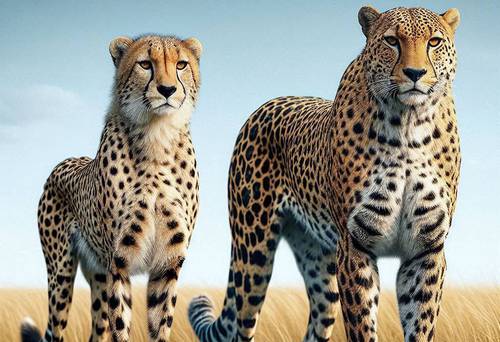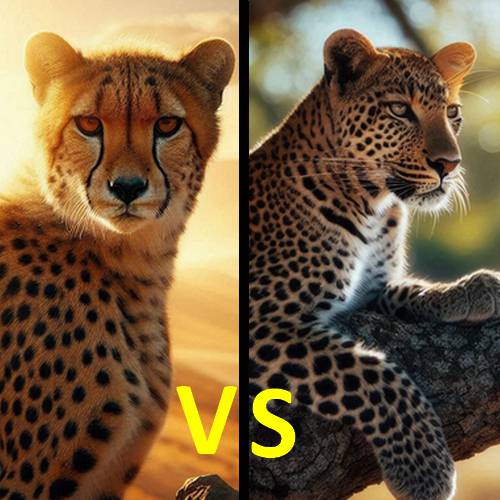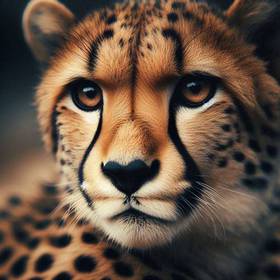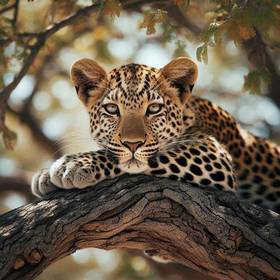While both cheetahs and leopards are stunning members of the cat family, their physical appearance reveals key differences.
Here's a breakdown of their spots and body shape:
Spots:
• Cheetah: Their spots are solid black and round, resembling tear-drop shapes. They're spread evenly across the body, including the face and tail. Unlike leopards, cheetahs lack rosettes, the ring-like patterns around their spots.
• Leopard: Leopards sport black rosettes – large, ring-like spots with smaller spots inside. These rosettes are more prominent and densely clustered on their body, creating a more camouflaged look. Their spots also extend to their belly and legs.
Body Shape:
• Cheetah: Built for speed, cheetahs have a slender, streamlined body with a long, thin tail for balance. Their legs are long and lean, giving them an athletic appearance.
• Leopard: Leopards are more muscular and robust than cheetahs, with a stockier build. Their legs are shorter and thicker, making them stronger and better equipped for climbing. They also have a thicker neck and head, giving them a more powerful look.
Size:
• Cheetah: A typical adult cheetah weighs between 40-70 kg (88-154 lbs) and can reach a length of 1.5-2.5 meters (4.9-8.2 ft), making them one of the world's largest cat species.
• Leopard: Leopards are generally larger than cheetahs, with males weighing up to 90 kg (198 lbs) and reaching lengths of 2.1-2.7 meters (6.9-8.9 ft).
In a nutshell, the cheetah's slender build and solid black spots scream speed and agility, while the leopard's muscular physique and distinct rosettes hint at strength and camouflage.
These distinct features reveal their unique adaptations for hunting and survival in their respective environments.
Here's a breakdown of their spots and body shape:
Spots:
• Cheetah: Their spots are solid black and round, resembling tear-drop shapes. They're spread evenly across the body, including the face and tail. Unlike leopards, cheetahs lack rosettes, the ring-like patterns around their spots.
• Leopard: Leopards sport black rosettes – large, ring-like spots with smaller spots inside. These rosettes are more prominent and densely clustered on their body, creating a more camouflaged look. Their spots also extend to their belly and legs.
Body Shape:
• Cheetah: Built for speed, cheetahs have a slender, streamlined body with a long, thin tail for balance. Their legs are long and lean, giving them an athletic appearance.
• Leopard: Leopards are more muscular and robust than cheetahs, with a stockier build. Their legs are shorter and thicker, making them stronger and better equipped for climbing. They also have a thicker neck and head, giving them a more powerful look.
Size:
• Cheetah: A typical adult cheetah weighs between 40-70 kg (88-154 lbs) and can reach a length of 1.5-2.5 meters (4.9-8.2 ft), making them one of the world's largest cat species.
• Leopard: Leopards are generally larger than cheetahs, with males weighing up to 90 kg (198 lbs) and reaching lengths of 2.1-2.7 meters (6.9-8.9 ft).
In a nutshell, the cheetah's slender build and solid black spots scream speed and agility, while the leopard's muscular physique and distinct rosettes hint at strength and camouflage.
These distinct features reveal their unique adaptations for hunting and survival in their respective environments.





